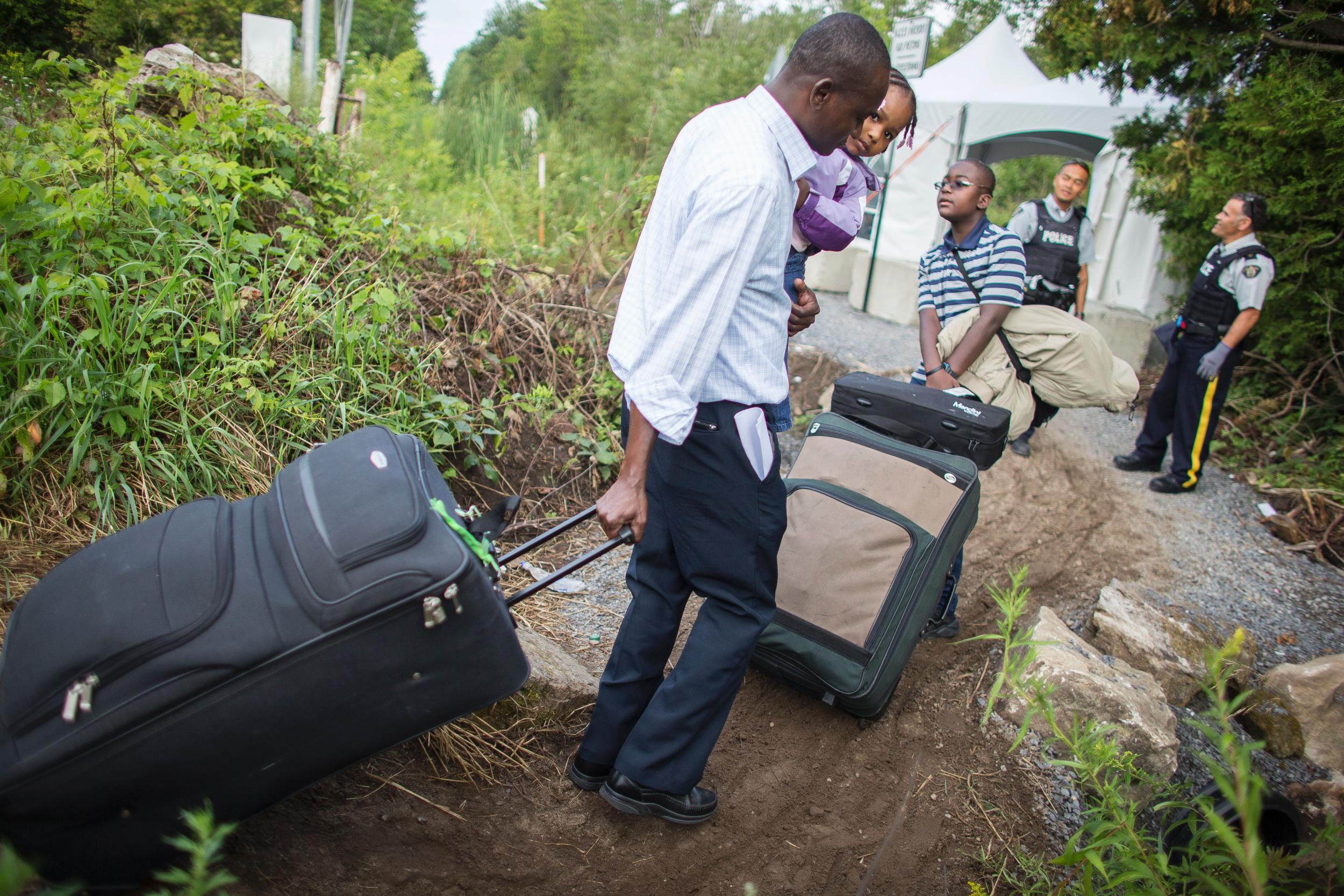Canada builds Haitian refugee border camp but processing may lead to months of legal limbo
The military has erected tents to tend to a big spike in crossings from the US as refugees fear Donald Trump

Along the US-Canada border, a tent camp has been constructed by the Canadian military to house and shelter a stream of mostly Haitian refugees fleeing from the United States for fear that Donald Trump will order their deportations.
Just north of an unfenced section of the friendly border that runs between Quebec and New York State, an uptick in crossings has been noticed recently, with as many as 250 refugees arriving on foot a day. But, while the tent camp is seen as a humane response to a growing problem, the refugees are still marching north to what will likely be months waiting in legal limbo for their cases to be heard.
“This is the first time in my career that they have built a refugee camp,” Stéphane Handfield, an immigration lawyer in Montreal for 25 years, told The Independent. He said that, although the government was doing a decent job housing the immigrants, temporary housing provided in places like the tent camp, Montreal’s Olympic stadium, and elsewhere still aren’t enough.
“This is not the place to put families,” he continued. “There are kids there. There are pregnant women there. In a small bed in the Olympic Stadium — the Olympic Stadium is not built to receive families or to receive people,” he continued.
Refugees have been bypassing normal ports of entry as the result of a longstanding agreement between the US and Canada to turn away refugees arriving from either country at a border checkpoint — but refugee seekers who make it onto Canadian land will still be processed. Following recent crack downs on undocumented immigrants in the US, portions of the mostly Haitian population that sought refuse in the US after the 2010 earthquake have been sneaking up north.
The uptick in migrant crossings into Canadian territories have put incredible stresses on the government’s ability to process refugee applications. As a result, the refugee claim process that previously took little time now may take months, and even then the application process for a work visa can take months longer. Even the initial registering process is bogged down, prompting the military to build the tent camp for temporary shelter.
Nearly 100 soldiers were sent to the border to construct the tent camp, which will provide basic amenities including heat for the 500 or so refugee seekers there. The soldiers are expected to return home once the tents are set up.
Refugee claimants arriving in Canada right now may have to wait until as early as December before their eligibility interviews can be scheduled, which will hinder their ability to gain access to some critical services like healthcare and work permits, Chantal Lannicello, a board member with the Quebec Association of Immigration Lawyers, said. Their source of income, as they wait in limbo, will come in the form of cheques from the government to help cover basic costs of living.
“I don’t understand why, when they apply for the refugee status, the Canadian government doesn’t give them a work permit. A lot of my clients — they want to work,” Mr Handfield said. “They don’t want to be on social welfare. They don’t want to take money from the government. They want to pay for their families, for their kids, for their life.”
Canada first implemented a deportation ban on Haitian refugees after a coup in 2004, and extended that measure following the 2010 earthquake. The ban expired last August.
Still, returning to Haiti could pose risks for those in the United States. The government maintains a strict confidentiality rule for refugee processing, for fear that the names of individuals seeking asylum might make it back to the Haitian government. In addition to political risks posed to anyone who may have cause to fear the government there, a crumbling infrastructure that has been devastated by that earthquake and tropical storms has already left 175,000 people displaced and 280,000 people in "highly food insecure" positions.
Many refugees appear to be hearing that they will find safe haven in the the Great White North. It is unclear if that is true, however, as Canada grapples with what to do with the large numbers of refugees they’re processing.
Already in the first half of 2017, Canada saw more than 4,300 asylum seekers walk across the border from the US. That was before the uptick of Haitians leaving the United States began. Last year, Canada accepted 50.5 percent of the 410 refugee claims from Haitians, according to government data.
The United States this year extended in January the deportation bans on the 50,000 Haitians who had come following the devastating 2010 earthquake, but notified those same refugees in May that they should begin acquiring travel documents to return to Haiti.
The US, under Mr Trump’s leadership, plans to impose stricter immigration standards, and has suggested it will cut legal immigration by 50 percent over 10 years.
Join our commenting forum
Join thought-provoking conversations, follow other Independent readers and see their replies
Comments